This post may contain affiliate links. Please read my privacy policy.
Sambal Belacan is a quintessential Malaysian condiment and a fundamental component of Malaysian cuisine. Discover the best and most authentic sambal belacan with my easy, step-by-step recipe.
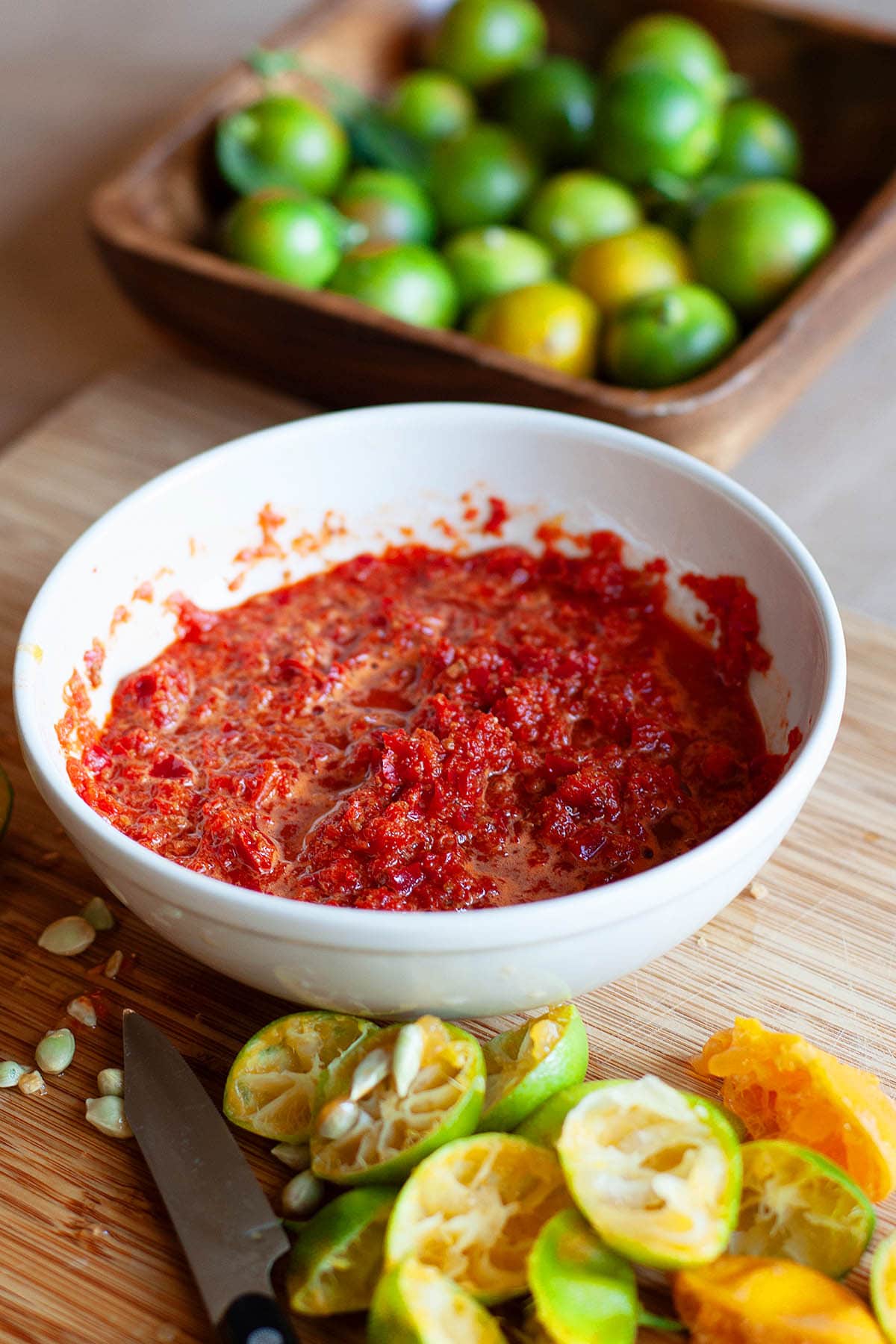
Sambal belacan is a must-have Malaysian condiment and a key ingredient in many delicious Malaysian recipes.
Sambal is a common condiment in Southeast Asia, especially in Malaysia, Indonesia, and Singapore. It is a blend of chilies, belacan (Malaysian shrimp paste) or terasi (Indonesian shrimp paste), and lime juice (calamansi or lime), adding heat and flavor to various dishes.
Sambal can also be made into a sambal sauce, which pairs wonderfully with proteins like chicken, fish, or shrimp, as well as eggs and vegetables, such as in prawn sambal, sambal telur, and sambal lady’s fingers. Additionally, it’s a fantastic condiment for nasi lemak, Malaysia’s iconic national dish.
What Is Sambal Belacan
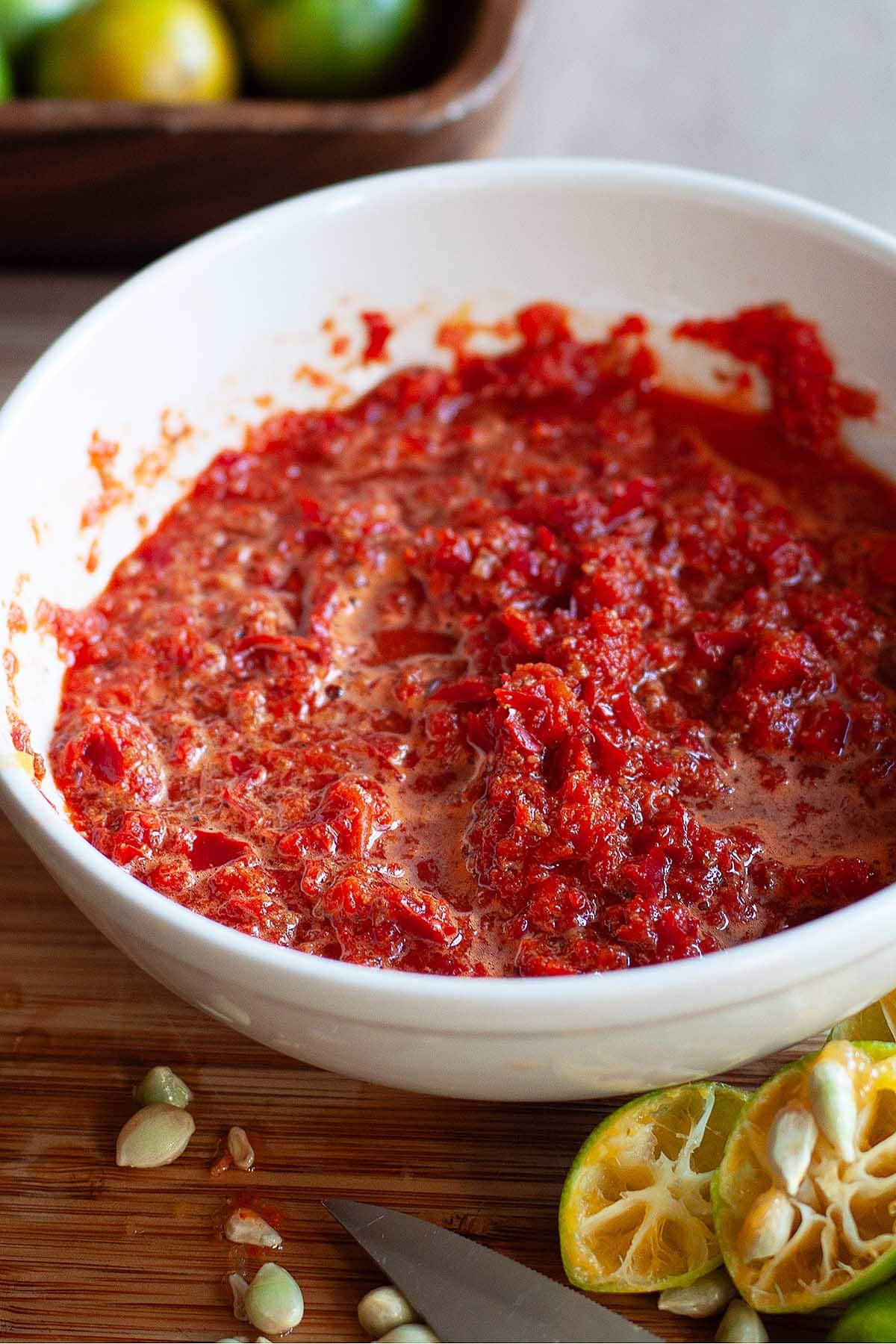
Sambal belacan is the Malaysian version of sambal, with a blend of chilies, belacan (Malaysian shrimp paste), calamansi lime (limau kasturi), salt, and sugar.
In the United States, calamansi lime can be hard to find, so lime can be used as a substitute. However, calamansi lime is ideal for sambal belacan as it adds a distinctive aroma and nuance.
Belacan is the most crucial ingredient in sambal belacan. It needs to be toasted in a skillet or wok until it becomes dry and crumbly.
As a condiment, sambal belacan is indispensable. I use it with rice and noodles, and it pairs wonderfully with Malaysian dishes like my favorite Egg Masak Belanda, Hokkien Char, and Grilled Fish with Banana Leaves.
To make the best sambal belacan, a mortar and pestle is essential. Pound the ingredients by hand until they achieve a smooth, slightly runny texture.
The finished sambal belacan is red and somewhat liquid, similar to a sambal sauce. Use it immediately or store it in the fridge for a few days. For longer storage, you can freeze it and thaw to room temperature before use.
Types of Sambal
There are two main types of sambal: fresh sambal and cooked sambal.
Cooked Sambal: Also called sambal tumis or sambal goreng, this type is made by cooking the sambal paste with oil and additional ingredients such as garlic, shallots, onions, lemongrass, and galangal. The specific ingredients can vary depending on the recipe. Cooking the sambal enhances its flavor, giving it a richer, more complex taste. Cooked sambal is often used as a base for other dishes or as a flavor booster in various recipes.
Fresh Sambal: Also known as sambal mentah, this type is made from raw ingredients, like in the sambal belacan recipe here. Sometimes, fresh sambal includes additional ingredients such as shallots, garlic, and tomatoes. It is used as a condiment or dip. Fresh sambal has a vibrant, raw flavor and is often added to dishes just before serving.
Frequently Asked Questions
It is only 31 calories per serving.
Uses For Sambal Belacan
Sambal Belacan is valued for its ability to add depth and heat to many rice and noodles, making it a versatile and essential condiment for the following Malaysian dishes:
I hope you enjoy this post as much as I do. If you try my recipe, please leave a comment and consider giving it a 5-star rating. For more easy and delicious recipes, explore my Recipe Index, and stay updated by subscribing to my newsletter and following me on Facebook, Pinterest, and Instagram for new updates.

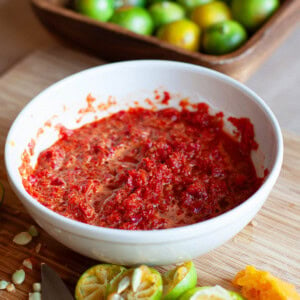
Sambal Belacan
Ingredients
- 4 oz (125g) red chilies, seeded, thinly sliced
- 1 tablespoon belacan, shrimp paste
- salt to taste
- 1 – 1 1/2 teaspoons sugar
- 2 tablespoons Calamansi lime juice , or lime juice
Instructions
- Clean the chilies under running water, then seed and slice them. Transfer the chilies to a mortar.
- Heat a wok or pan over low heat and toast the belacan until it becomes aromatic. It should turn dry and powdery after toasting. Transfer it to the mortar with the red chilies and pound with the pestle until fine. (Some people prefer their sambal belacan a bit coarse, so adjust to your taste.)
- Transfer the mixture to a bowl, then add salt and sugar to taste, along with lime juice (or calamansi lime juice). Blend well. You can store the sambal in the refrigerator for a couple of days or freeze it for longer storage.
Notes
Nutrition
Nutrition information is automatically calculated, so should only be used as an approximation.
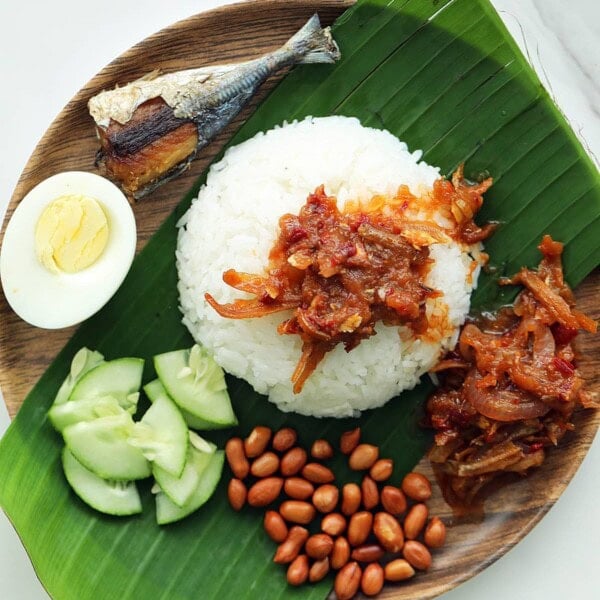
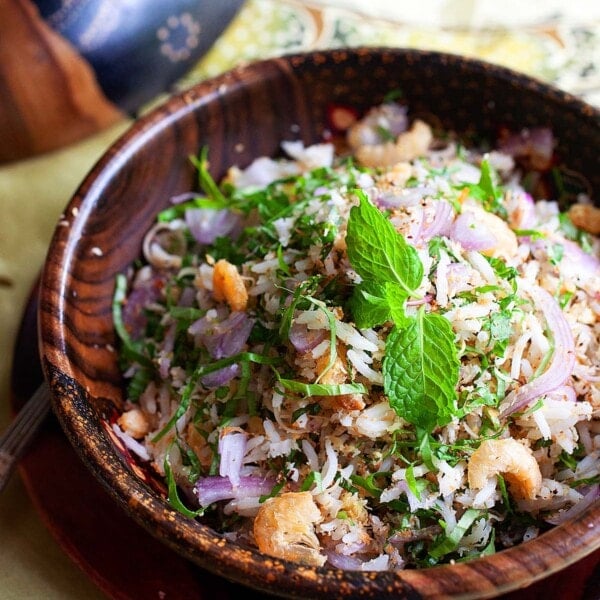
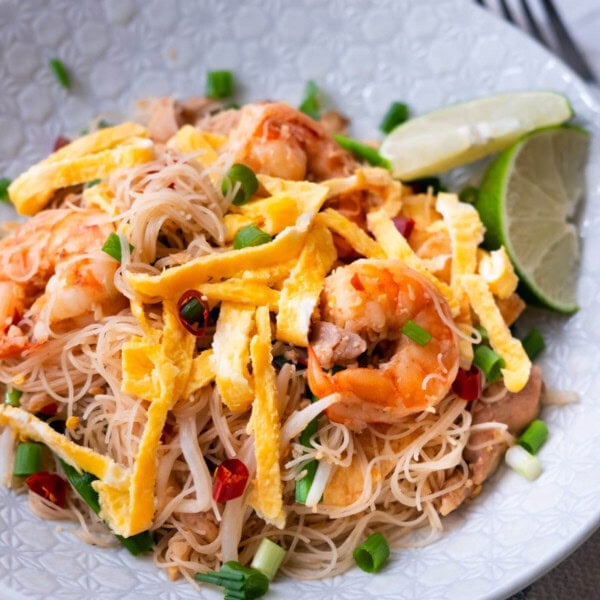
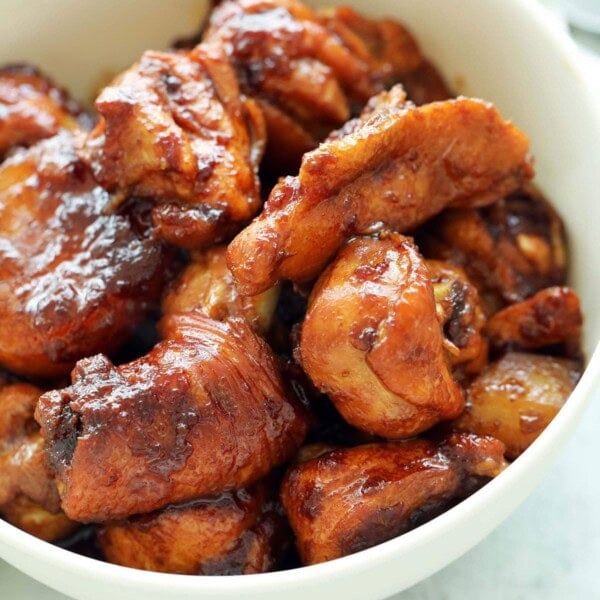






What kind of peppers do you use for the Sambal sauce and Rending sauce? Thanks
Fresh red chilies for sambal belacan. Rendang is dried red chilies.
Hi if I’m not getting the belacan istead of that which brand you can suggest.and can I use Thai shrimp paste instead of belacan.
What kind of chili’s are best to use for the best flavor?
Fresh red chilies.
If using belacan powder, what would be the equivalent amount of powder for 1 Tbsp of paste? Thank you.
Yes.
Hi Bee,
Can I use the belacan without toasting it dry?
Thanks.
You can but it’s not ideal. It’s best to toast.
it looks like a very intriguing sambel appetite and makes us like to add rice ,, good belacan is from shrimp choice and without preservative
Can you use dried chilli instead of fresh chilli.
Can I freeze sambal belacan asparagus?
You can freeze the belacan but not the asparagus.
Hi, I notice that you don’t cook the sambal belacan. Will it be acceptable to cook or boil it?
Yes it’s served uncooked. You don’t have to cook or boil it.
Hi Bee,
I realised you don’t cook the chilli. However, in order to preserve it better, can we cook or steam them first? Would it taste the same?
You don’t cook sambal but if you want, you can cook it.